Table of Contents
How to Incorporate ChatGPT into Your Application
Author

Subject Matter Expert


Date

Book a call
Introduction
ChatGPT is rapidly stealing the show in many workflows — coding, designing, framework, and content creation. The advanced AI language model made by OpenAI can give responses like a human would while in a conversation. It does this by studying lots of text data to understand what you mean and to make an answer that fits the discussion.
But Why Include ChatGPT in Your Application?
Integrating Chat GPT into your application can benefit your users and your business in several ways. ChatGPT can bridge the gap between your users and your business, improving overall efficiency and productivity from virtual assistants to chatbots and a range of language-related tasks.
In a nutshell, by incorporating Chat GPT into your application, you can augment the capabilities of your app in several ways. Here are some of them:
- You can improve user engagement by providing faster and more accurate responses to inquiries. This can lead to increased customer satisfaction and loyalty.
- Automation of certain tasks can free up time and resources for your team to focus on other important aspects of your business.
Let us see how you can use this technology for your business. 🔽
Understanding Your Use Case
Before integrating Chat GPT into your application, it is important to understand the problems you want to solve and how Chat GPT can help. A common ChatGPT use case can be found in customer service apps. ChatGPT enables more accurate, quicker-than-ever-before responses to customer inquiries. This helps reduce the support team's workload while increasing customer satisfaction.
Chatbots are another use case. ChatGPT can be used to get back responses to user queries in a natural language format. This conversational experience is seamless, highly personalized, and does not require human intervention.
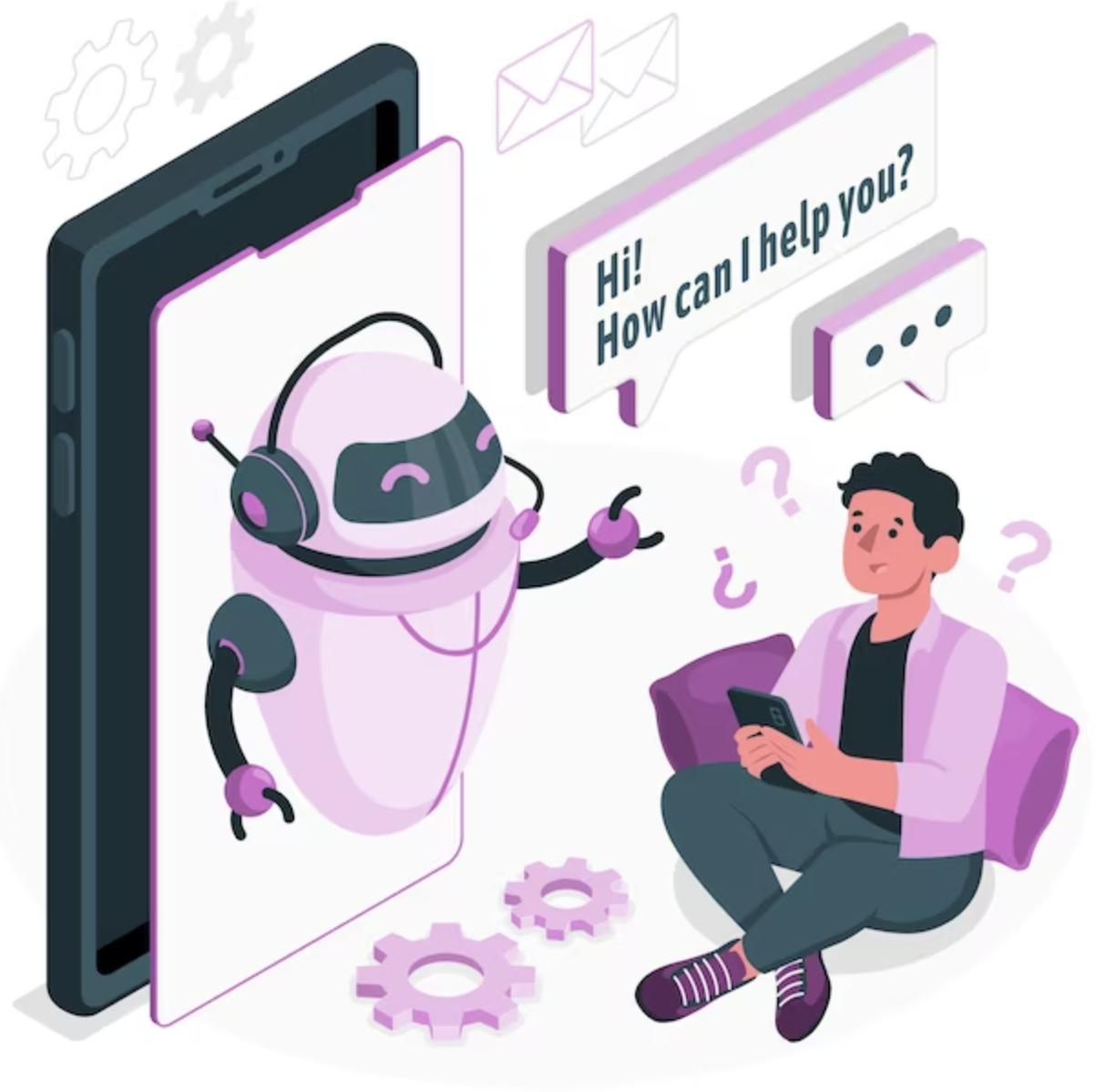
Chat GPT can also be used in virtual assistants, language translation, and content generation applications. For example, if you are targeting users who speak different languages, Chat GPT can provide real-time language translation. This offers better user engagement and makes your application more accessible to a wider audience.
By understanding your targets and how ChatGPT can help achieve them, you can create a more effective and impactful app.
Selecting the Right API for Your Business
Some important factors to keep in mind while selecting an API specific to your use case:
Do The Features and Capabilities of the API Work for Your App?
Some questions you need to ask are: Do you need more advanced features or more accurate results than others? Does your app focus on language translation or question-answering? This is because API selection depends on your specific use case if it has not been iterated enough already.
The Price Factor
The cost of an API depends on its usage and the features it offers. You should always select an API that fits your budget and specific app requirements.
Know The Limitations or Restrictions That May Apply to the API
It is important to make sure that the API you select has no limitations or restrictions that may interfere with its effective utilization in your project. For example, there could be limitations on the amount or types of data the API can process.
Several APIs are available if you wish to integrate Chat GPT into your application.
Here are a few popular ones:
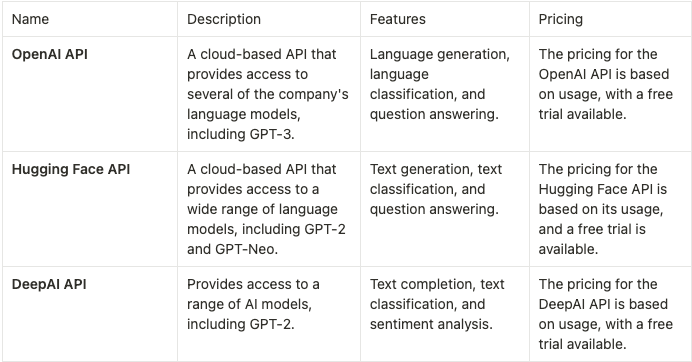
These APIs will help you set up the ChatGPT model that you will be using in your business.
Tips for Data Collection and Training
Once you have set up your ChatGPT model, it is time to focus on keeping it accurate, customized, and up-to-date. Since ChatGPT relies on data, ensuring that its data is of high quality will give you the best results.
These are a few tips to keep your responses on point:
- Get Good Data: You need accurate and relevant data to create a great model. Collect high-quality data that covers a wide range of topics your audience cares about. You can find data in books, websites, news articles, social media, and other publicly available text data.
- Clean Up the Data: Before feeding the data to your model, remove any junk that doesn't belong. Get rid of duplicates, HTML tags, and spelling and punctuation errors.
- Keep the balance: Train your ChatGPT model regularly to ensure it's unbiased, with no redundancy, and always up-to-date. Balance the training data across different topics to get the best responses.
- Augment Your Data: Sometimes you need to get creative. Modify your existing data to create even more training data and get better and more accurate results. Try things like random deletion, swapping, and synonym replacement.
- Train and Fine-tune: Train your ChatGPT model on a specific database relevant to your project to get the most accurate and relevant responses. Use customer feedback, support tickets, and machine learning tools to keep it on point.
Integrating Chat GPT into Your App
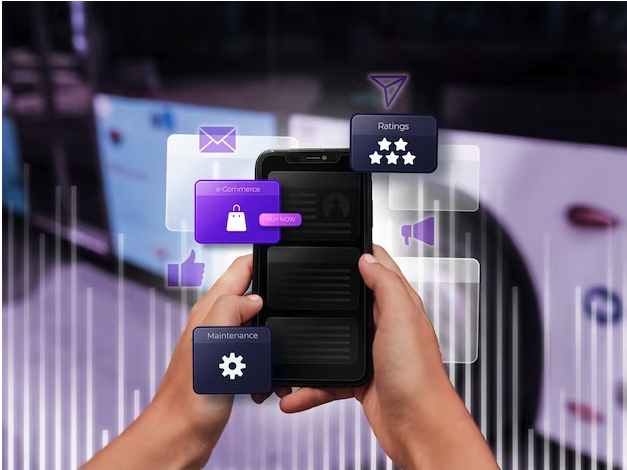
Integrating Chat GPT into your app may appear daunting at first, but with the right approach, it is entirely doable.
Here is how to get started:
- Get the API set up: Create an account, select the plan that works for you, and generate API keys. Then, give those keys to your development team so they can get to work.
- Integrate with your front-end: Create an interface that enables the users to ask questions and receive answers from Chat GPT. Work with your development team to ensure everything runs smoothly.
- Test and debug: Ensure the integration works correctly by testing it in different scenarios. If anything goes wrong, debug it until it's fixed.
💡 Tips for Success
- Teamwork makes the dream work: Communicate with your team so everyone knows what's happening.
- Test thoroughly: Put your integration through the wringer to ensure it is accurate and relevant.
- Track performance: Monitor response times, user engagement, and customer satisfaction.
- Get feedback: Use what your users say to improve your model.
A Few Best Practices and Tips
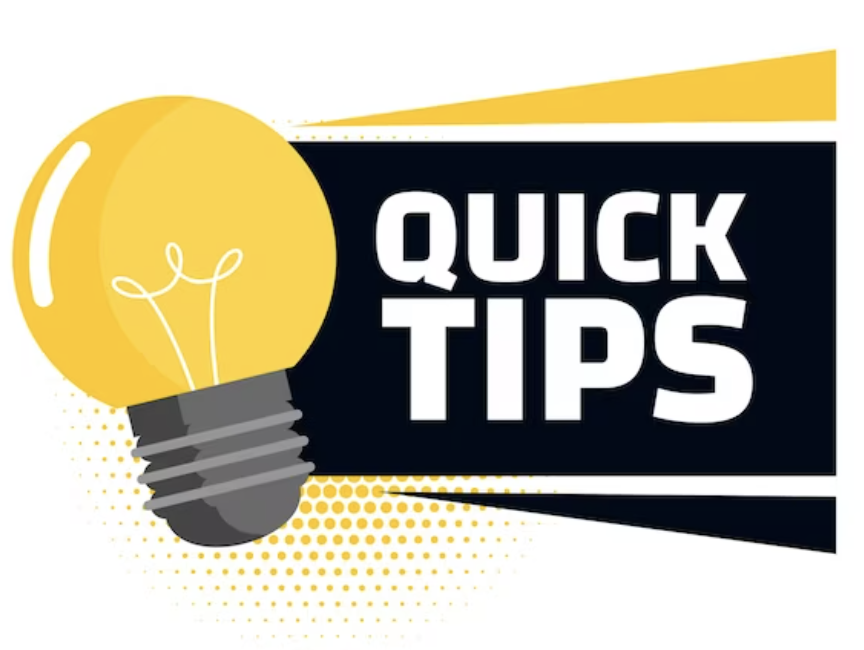
When working with Chat GPT, keep these tips in mind:
- Don't Mess with User Privacy: As ChatGPT deals with user data, ensure it's secure and follows privacy regulations. Encrypt and store user data safely so unauthorized persons can't share or access it.
- Keep an Eye on Performance: Monitor your ChatGPT model to ensure it's producing accurate and relevant responses. Use analytics to track response times, user engagement, and customer satisfaction. Use feedback and new training data to improve the model.
- Be Clear with Users: Be transparent about how ChatGPT works and what data it collects. This builds trust and ensures users know how their data is being used.
- Use Other Technologies: Try combining ChatGPT with natural language processing or sentiment analysis to improve response accuracy and relevance. It'll make a big difference!
- Use ChatGPT to Supplement Human Interaction: ChatGPT can't replace human interaction entirely. Use it to help your customer service team, not take their place.
What Do We at GeekyAnts Think About ChatGPT?
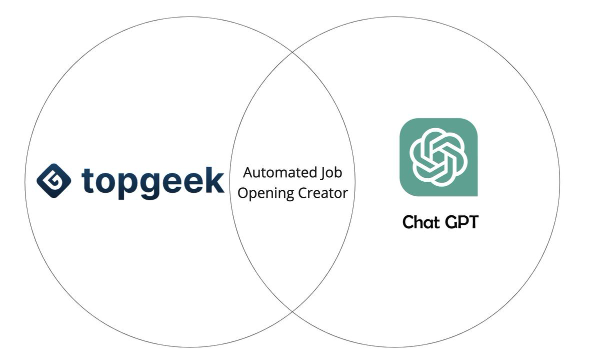
Keeping with our tradition of experimenting with new technologies, we at GeekyAnts app design and development studio combined ChatGPT with topgeek, our in-house automated hiring platform. Using ChatGPT, topgeek can create job openings automatically and grade interviews according to the set parameters, including speech transcriptions and code evaluation.
Here is what our resident Geeks had to say about the technology:
Priyamvada, Software Engineer @GeekyAnts
"My take on ChatGPT integrations into apps is that it has the potential to revolutionize how we interact with technology. By embedding advanced natural language processing capabilities into applications, developers can create more engaging and intuitive user experiences. This can transform industries such as customer service, education, and entertainment, where communication is crucial.
While ChatGPT integrations into apps offer numerous benefits, there are also some potential drawbacks. Relying too heavily on AI-powered natural language processing could decrease human-to-human interaction, which could have negative consequences for social interactions and relationships.
Additionally, there is a risk of bias or inaccuracies in the language processing algorithms, which could lead to unintended consequences or reinforce existing societal biases. Developers need to be aware of these potential risks and take steps to mitigate them when integrating ChatGPT into their apps.
If I were to integrate ChatGPT into an app, I would select apps like Chatbots, Virtual Assistants, Education Apps, and Customer Service Apps, which involve human-computer interaction and natural language processing. Some of the interesting use cases of ChatGPT integrations I’ve come across are in content creation platforms. ChatGPT can generate ideas, draft articles and even write scripts for short videos or presentations. Also, it can act as an evaluator for question answers.”
Vineet Dugar, Software Engineer @GeekyAnts
“Integration with entertainment apps like OTTs (Netflix, Amazon Prime) or Bookmyshow, Insider would be a very nice use. We can enter certain keywords based on our mood or preferences and get suggestions for what shows to watch or what events to attend. Also, with food apps like Zomato or Swiggy for the same where we enter our preferences or our mood, it automatically gives us the best suggestion for our priorities. The other integration as a developer I would love would be with Stackoverflow since it would help me find solutions to development problems much faster. ChatGPT is here to stay.
In fact, generative AI is here and will change our lives whether we are developers, accountants, writers, designers, or even regular people. It will change how we do our work, interact with each other, and find solutions. Soon we will see integrations with customer support apps where more and more responses will be AI-generated and human interaction will go down.
Design apps like Figma will change, and instead of blank templates, we will get access to AI-generated ones based on our use case. Development tools like VS code have already gone a change with the integration of codeGPT and Copilot, where our development journey has become much easier and more assistive. There will come days when we want to build a feature, and surely the entire feature could be built with minimum human interference and almost completely by AI like chatGPT.”
Bridging Gaps in Your Application with ChatGPT
Using ChatGPT to its fullest potential can bring innumerable benefits to your business. From generating personalized, automated messages for your customers to creating content for advertising and marketing, ChatGPT improves and simplifies processes while reducing dependencies.
We can help you incorporate ChatGPT in a way that augments your business goals and processes. To learn more, book a call with us today: CLICK HERE
Dive deep into our research and insights. In our articles and blogs, we explore topics on design, how it relates to development, and impact of various trends to businesses.





